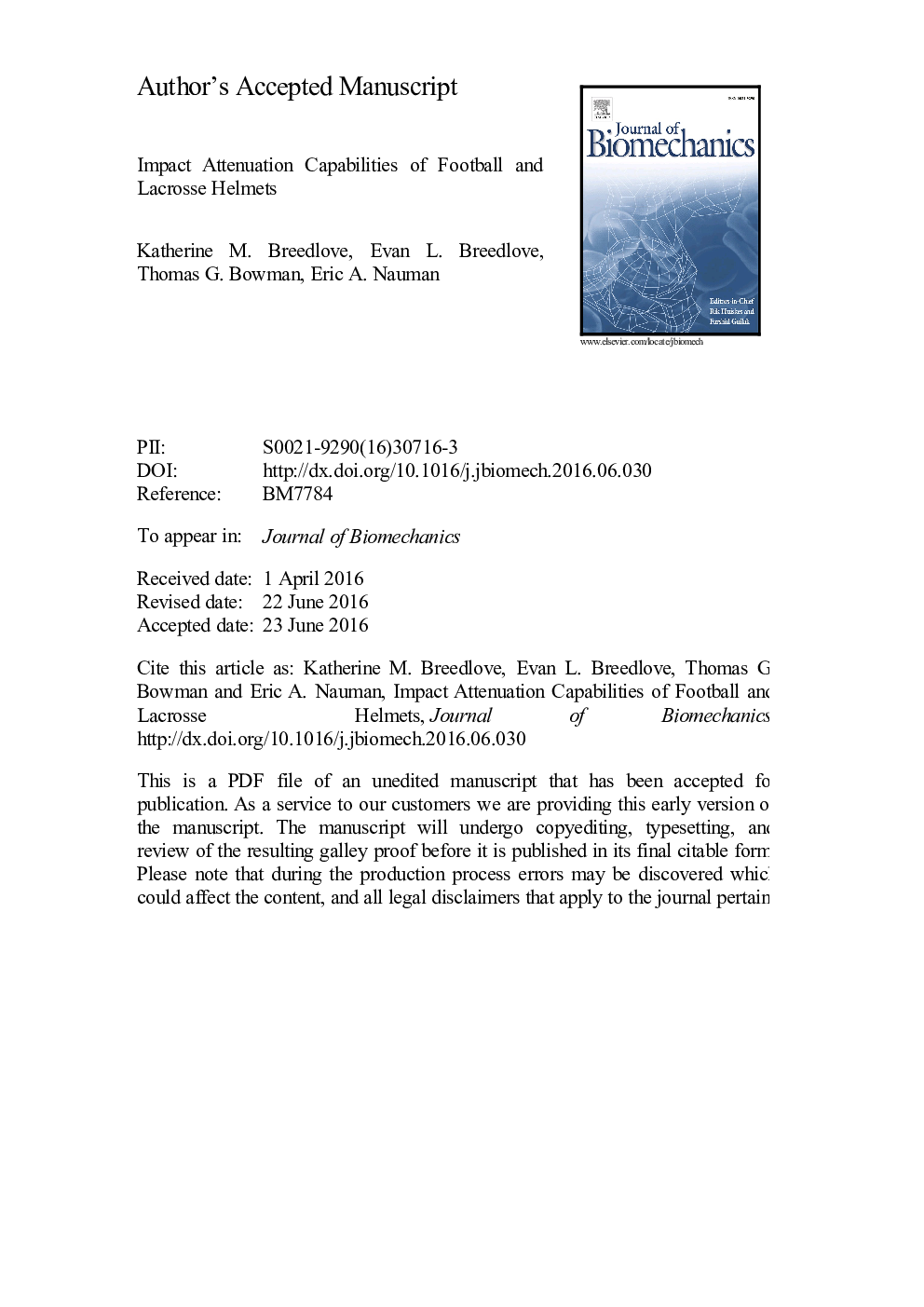| Article ID | Journal | Published Year | Pages | File Type |
|---|---|---|---|---|
| 5032460 | Journal of Biomechanics | 2016 | 26 Pages |
Abstract
Although the National Operating Committee on Standards for Athletic Equipment (NOCSAE) standards are similar for football and lacrosse helmets, it remains unknown how helmets for each sport compare on drop tests. Due to the increased concern over head injury in sport and the rapid growth in lacrosse participation, it is useful to compare the performance of various football and lacrosse helmets. Therefore, the goal of this study was to document the impact attenuation properties of football and lacrosse helmets and to identify the relative performance between helmets for the two sports. Six models of football and six models of lacrosse helmets were tested using a drop tower at three prescribed velocities and six locations on the helmets. A repeated measures ANOVA was conducted to determine the effect of sport on Gadd Severity Index (GSI) scores and linear accelerations. The interaction between location and sport was significant at the low (F2.64,89.71=7.68, P<.001, η2=.025), medium (F2.85,96.85=16.78, P<.001, η2=.085), and high (F2.96,100.69=16.67, P<.001, η2=.093) velocities for GSI scores. When comparing peak acceleration results, we found a significant interaction between location and sport for the medium (F3.40,115.616=5.57, P=.001, Ï2=.031) and high (F3.46,117.50=6.42, P<.001, Ï2=.047) velocities. Features of football helmet design provide superior protection compared to lacrosse helmets. Further investigation of helmet design features across sports will yield insight into how design features influence helmet performance during laboratory testing.
Related Topics
Physical Sciences and Engineering
Engineering
Biomedical Engineering
Authors
Katherine M. Breedlove, Evan L. Breedlove, Thomas G. Bowman, Eric A. Nauman,
